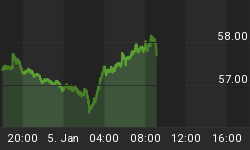It should increase short-term, especially against commodity currencies such as the Canadian and Australian dollars. The euro could instead decline below the important support line at 1.30. New political leaders in France and Greece increase risk in an already risky environment.
Was it so bad?
In April, non-farm payroll rose a tiny 115,000 (145,000 expected), way below the safe heaven benchmark of 150,000/200,000. The participation rate is slumping to 63.6%, the lowest level since the recession of 1981. Although the contraction was substantial, lots of weakness was in construction, after the supportive mild winter. In effect, initial claims fell 365,000 in the last week of April, eventually anticipating stronger results ahead. March profits were revised-up in the private sector by 45,000. The numbers are in line with current growth (around 2.5%) and gains in productivity (0.9%). Apparently, companies still prefer to rise the hours worked or to hire in-house part-timers instead of new workers. April data confirms also that the unemployment rate is in a down-trend. At 8.1%, it reached the lowest level of the past three years and the decline should persist for few more months, if history repeats itself.
The economy is still moving, but remains fragile. The services ISM index printed 53.5 in April from 56 in March. The manufacturing index increased instead to 54.8 from 53.4. Lastly, the capacity utilization is at 78.6%. The G.D.P. grew only +2.2% last quarter. Results are similar to 2011 data of 2.1%. How this time can be different? Growth has spread across various areas. As an example, final sales and domestic final sales increased faster than the previous quarter. Consumer spending rose 2.9%, while real business fixed investment fell 2.1. Latest data just reversed previous quarter numbers. As opposed to last year, when the CPI rose 4.4% in the first quarter, the Consumer Price Index should be around 1.4% in the first three months 2012. The oil market is retracing from the highs. Long speculative positions held by futures funds, are at record high. Unusually, it is a good indicator of important turning points
The two dollars are correcting.
What could happen now? Risk aversion should support the U.S. dollar, increase bond prices and penalize stocks over the short-term. According to the C.O.T. report (Commitment of Traders), larger speculators (mainly futures funds) are massively short the U.S. dollar against the Australian and the Canadian counterparts. They have also heavily bet for a decline of the 10 Year Treasury Note futures. What is left to sell, if all major players are involved? In addition, the decision of the Australian Central Bank to cut interest rates by 50 basis points to 3.75% last week took the financial community by surprise. It gave the impression the R.B.A. is very concerned about short-term growth perspectives and wants to act preventively against a deterioration of the economic climate in China and in Europe. AUS/USD could fall to 1.0140/1.0040.
The Canadian economy should instead outperform the U.S. economy over the medium-term supported by positive export numbers and the vast commodity sector. Nevertheless, the correction of raw material prices is weighing on the currency short-term. USD/CAD is targeting 1.0030/1.01. Finally, in Europe, the prospective of new leaders in France and Greece increases uncertainty, while the continent is in recession. In April, the PMI index fell to 46.9, the lowest level since the end of 2011. Now, consolidating public finances across the euro zone becomes quite impossible. Growth is expected. President Draghi addressed the issue during the Governing Council meeting in Barcelona. The E.C.B. could cut rates again, if data will be disappointing in the coming months. However, governments have to do most of the work. EUR/USD should target 1.30 and eventually 1.28/1.26 in the coming weeks.















